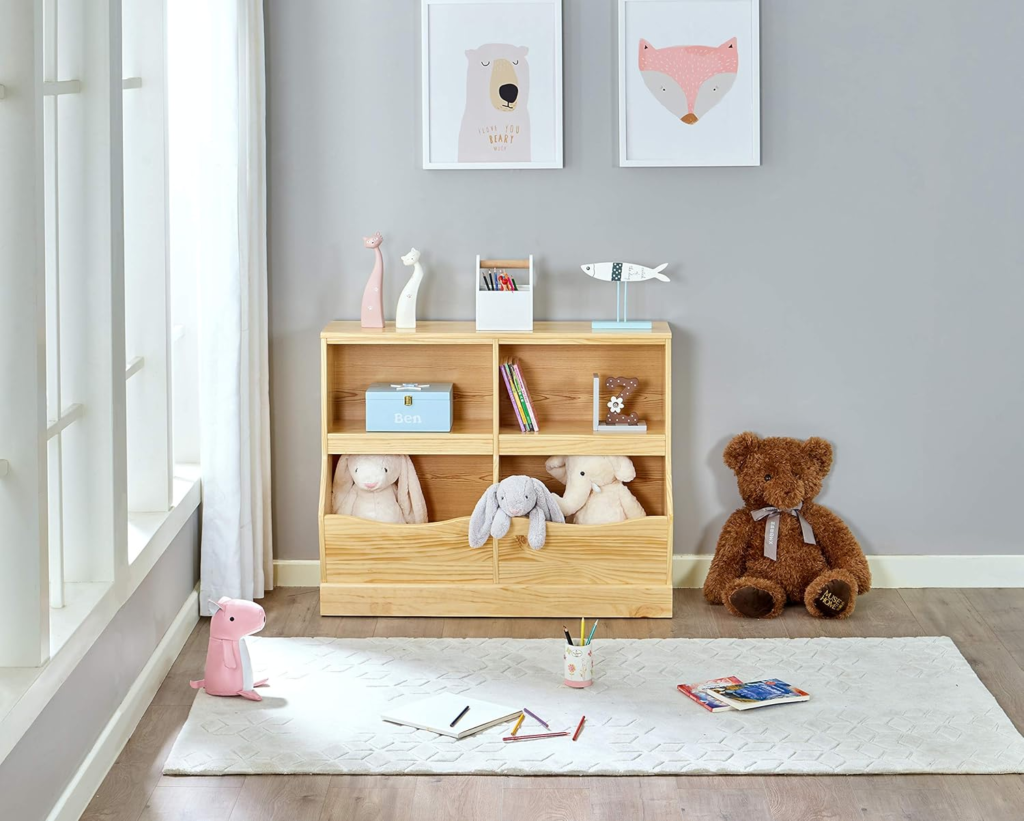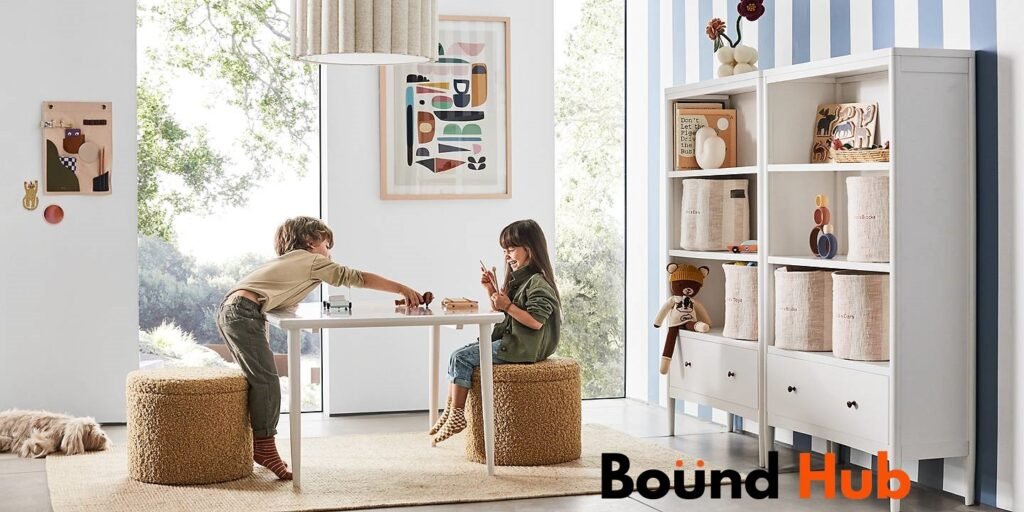Introduction: Why Toy Storage Matters
Every parent knows the struggle: toys scattered across every room, stepping on building blocks in the middle of the night, and trying to find that one action figure your child must have right now. Toy storage is not just about keeping your home clean—it’s about creating a space where your child can play, learn, and grow in a clutter-free environment. The right toy storage solution can save time, reduce stress, and teach kids essential organizational skills.
Benefits of Effective Toy Storage
1. Encourages Independence
When toys are stored in an organized and accessible way, children can learn to clean up after themselves, choose their own toys, and develop a sense of responsibility.
2. Maximizes Space
With smart storage systems, you can make the most of small rooms. Whether it’s using vertical space or multi-functional furniture, storage solutions help you free up valuable floor area.
3. Reduces Clutter
Having a designated spot for each type of toy helps prevent toys from being left around the house, creating a more peaceful and tidy home environment.
4. Enhances Playtime
When toys are organized, kids can easily find what they’re looking for, leading to more productive, imaginative play sessions.

Types of Toy Storage Solutions
1. Toy Storage Bins and Boxes
Stackable bins and clear containers are perfect for storing everything from LEGO sets to action figures. Look for ones with labels or transparent walls so your child can easily identify what’s inside.
- Pros: Affordable, versatile, easy to access
- Cons: Can look messy if not properly maintained
2. Storage Cubes and Shelves
Cube organizers are excellent for sorting toys by type or category. Pair them with fabric baskets to add a decorative touch.
- Pros: Stylish, customizable, suitable for all ages
- Cons: Takes up wall or floor space
3. Toy Chests
Traditional and timeless, toy chests can hold larger toys or plush animals. Choose chests with safety hinges to prevent accidental pinching.
- Pros: Spacious, keeps items out of sight
- Cons: Items at the bottom can be hard to reach
4. Under-Bed Storage
Make use of that empty space under your child’s bed with sliding drawers or bins on wheels.
- Pros: Hidden, space-saving
- Cons: Not suitable for daily-access toys
5. Over-the-Door Organizers
Perfect for small rooms or apartments, hanging organizers with pockets can store dolls, art supplies, or mini vehicles.
- Pros: Great for tight spaces, easy to install
- Cons: Limited weight capacity
6. Multi-Functional Furniture
Items like storage benches, ottomans, or beds with drawers combine seating or sleeping areas with hidden toy storage.
- Pros: Practical, dual-use, stylish
- Cons: Can be expensive
Tips for Organizing Toys Efficiently
1. Rotate Toys
Instead of overwhelming your child with every toy at once, rotate them weekly or monthly. This keeps the novelty alive and helps maintain interest in all their toys.
2. Label Everything
Use pictures or words to label each bin or basket. This not only helps with cleanup but also supports early literacy development in younger children.
3. Involve Your Child
Let your child help choose where toys should go. This gives them a sense of ownership and increases the likelihood they’ll stick to the system.
4. Sort by Category
Group toys into logical categories: puzzles, blocks, dolls, cars, art supplies, etc. It’s easier for children to know where things belong.
5. Store at Child Height
Make sure your child can reach their toys independently. Items used less often can go on higher shelves, but daily-use toys should be easily accessible.
Best Toy Storage Solutions by Room
Living Room
- Use closed cabinets or ottomans with storage space to blend toy storage with adult décor.
- Try rolling carts that can be moved to another room when not in use.
Bedroom
- Install floating shelves or cube organizers near the bed.
- Store plush toys in a hammock or soft basket.
Playroom
- Maximize wall space with pegboards, wall racks, or custom shelving.
- Create a reading nook with a small bookshelf and bins for books and quiet-time toys.
Bathroom
- Use mesh bags or plastic baskets with suction cups to keep bath toys dry and organized.
- Install a small shelf above the toilet for additional toy storage.
Safety Considerations
Always prioritize child safety when choosing and placing toy storage:
- Avoid heavy lids or sharp corners
- Choose non-toxic, BPA-free materials
- Anchor tall furniture to the wall to prevent tipping
- Make sure storage units have ventilation in case a child climbs in
Eco-Friendly Toy Storage Options
If sustainability is a priority, consider eco-conscious storage made from:
- Recycled plastic
- Bamboo or natural wood
- Organic cotton or canvas bins
- Brands like IKEA, 3 Sprouts, and Crate & Kids offer green storage options
Budget-Friendly DIY Toy Storage Ideas
- Repurpose shoe boxes or mason jars for small toys and craft supplies
- Convert old bookshelves or TV stands into toy storage units
- Use milk crates or laundry baskets as bins
- Paint and personalize wooden crates for a rustic, child-friendly solution
Conclusion: A Place for Everything, and Everything in Its Place
A well-thought-out toy storage strategy not only keeps your home organized but also cultivates a positive, responsible environment for your child to grow in. With a combination of smart design, practicality, and creativity, you can transform even the most cluttered play space into a functional, inviting, and joyful part of your home.


